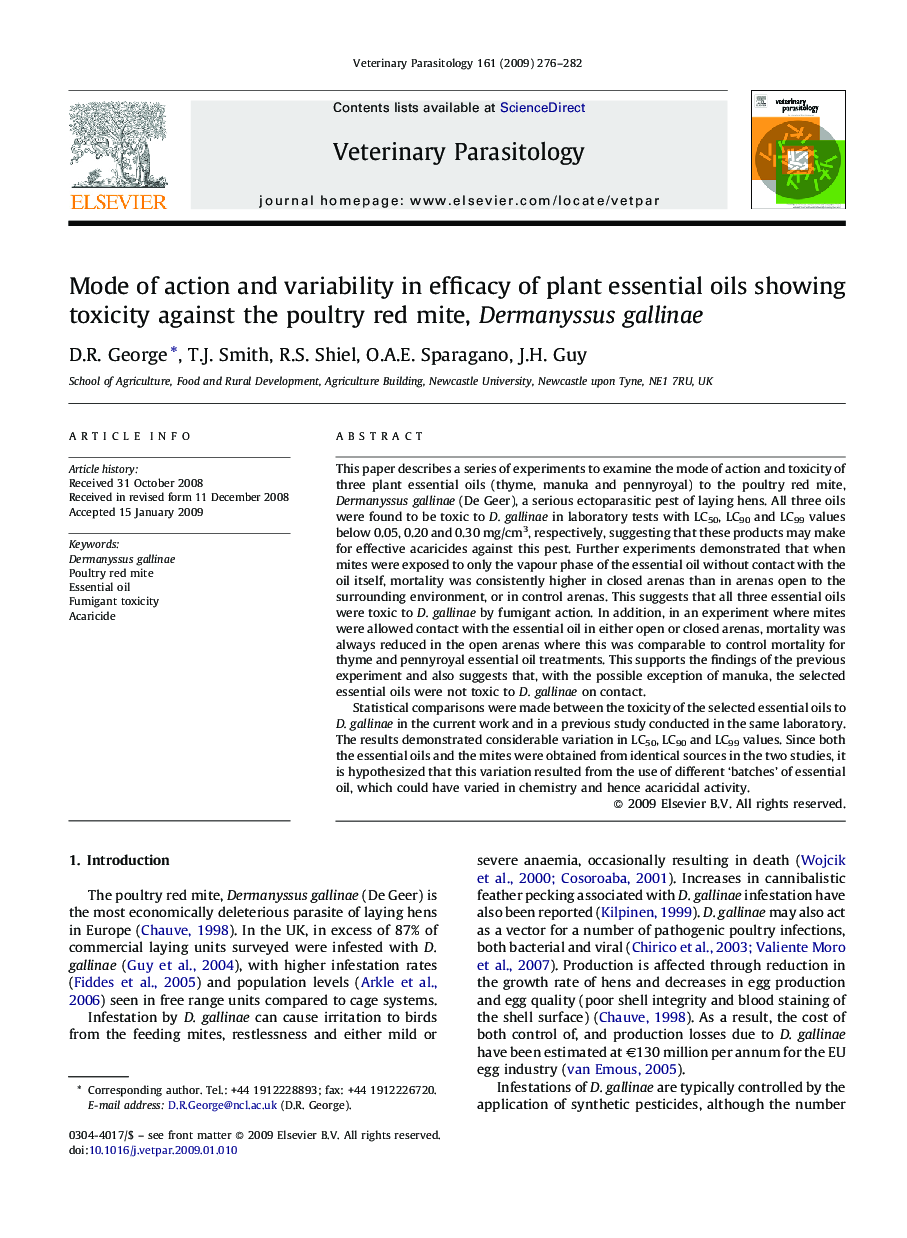| کد مقاله | کد نشریه | سال انتشار | مقاله انگلیسی | نسخه تمام متن |
|---|---|---|---|---|
| 2471147 | 1555755 | 2009 | 7 صفحه PDF | دانلود رایگان |

This paper describes a series of experiments to examine the mode of action and toxicity of three plant essential oils (thyme, manuka and pennyroyal) to the poultry red mite, Dermanyssus gallinae (De Geer), a serious ectoparasitic pest of laying hens. All three oils were found to be toxic to D. gallinae in laboratory tests with LC50, LC90 and LC99 values below 0.05, 0.20 and 0.30 mg/cm3, respectively, suggesting that these products may make for effective acaricides against this pest. Further experiments demonstrated that when mites were exposed to only the vapour phase of the essential oil without contact with the oil itself, mortality was consistently higher in closed arenas than in arenas open to the surrounding environment, or in control arenas. This suggests that all three essential oils were toxic to D. gallinae by fumigant action. In addition, in an experiment where mites were allowed contact with the essential oil in either open or closed arenas, mortality was always reduced in the open arenas where this was comparable to control mortality for thyme and pennyroyal essential oil treatments. This supports the findings of the previous experiment and also suggests that, with the possible exception of manuka, the selected essential oils were not toxic to D. gallinae on contact.Statistical comparisons were made between the toxicity of the selected essential oils to D. gallinae in the current work and in a previous study conducted in the same laboratory. The results demonstrated considerable variation in LC50, LC90 and LC99 values. Since both the essential oils and the mites were obtained from identical sources in the two studies, it is hypothesized that this variation resulted from the use of different ‘batches’ of essential oil, which could have varied in chemistry and hence acaricidal activity.
Journal: Veterinary Parasitology - Volume 161, Issues 3–4, 12 May 2009, Pages 276–282